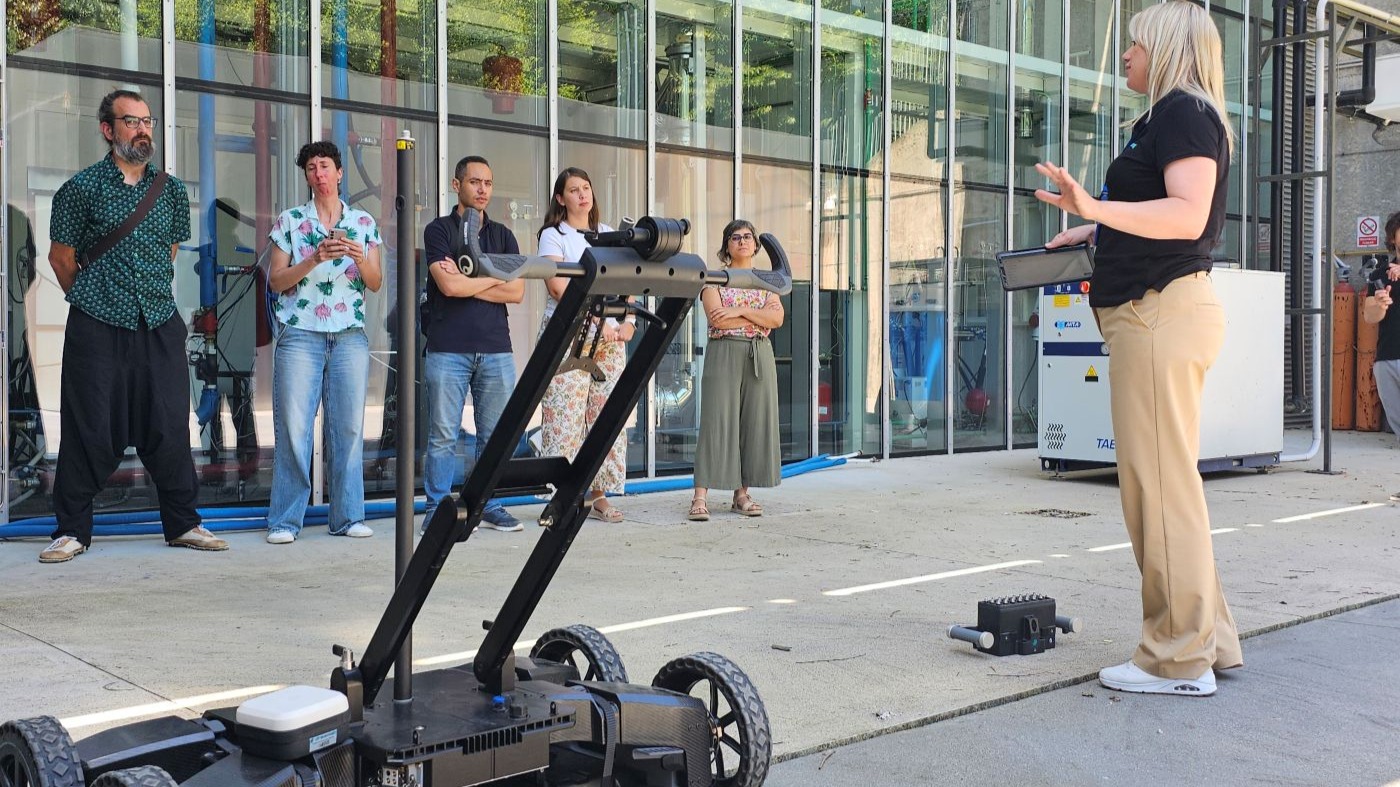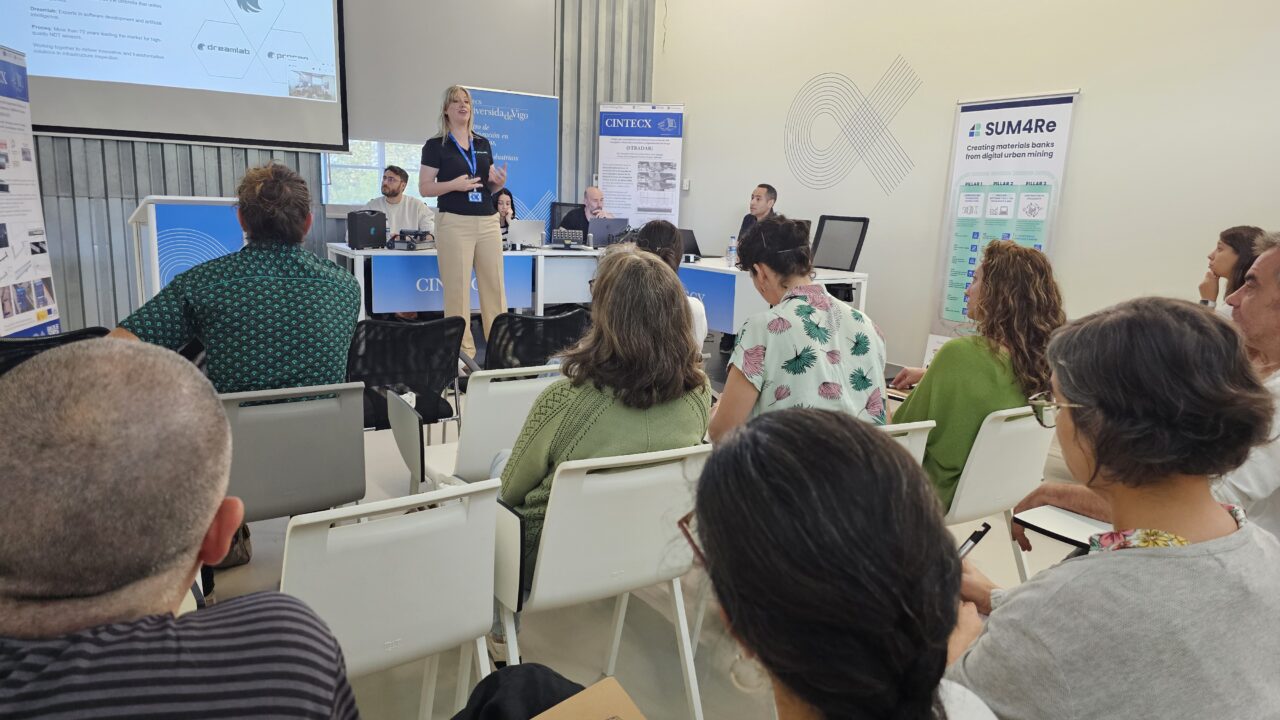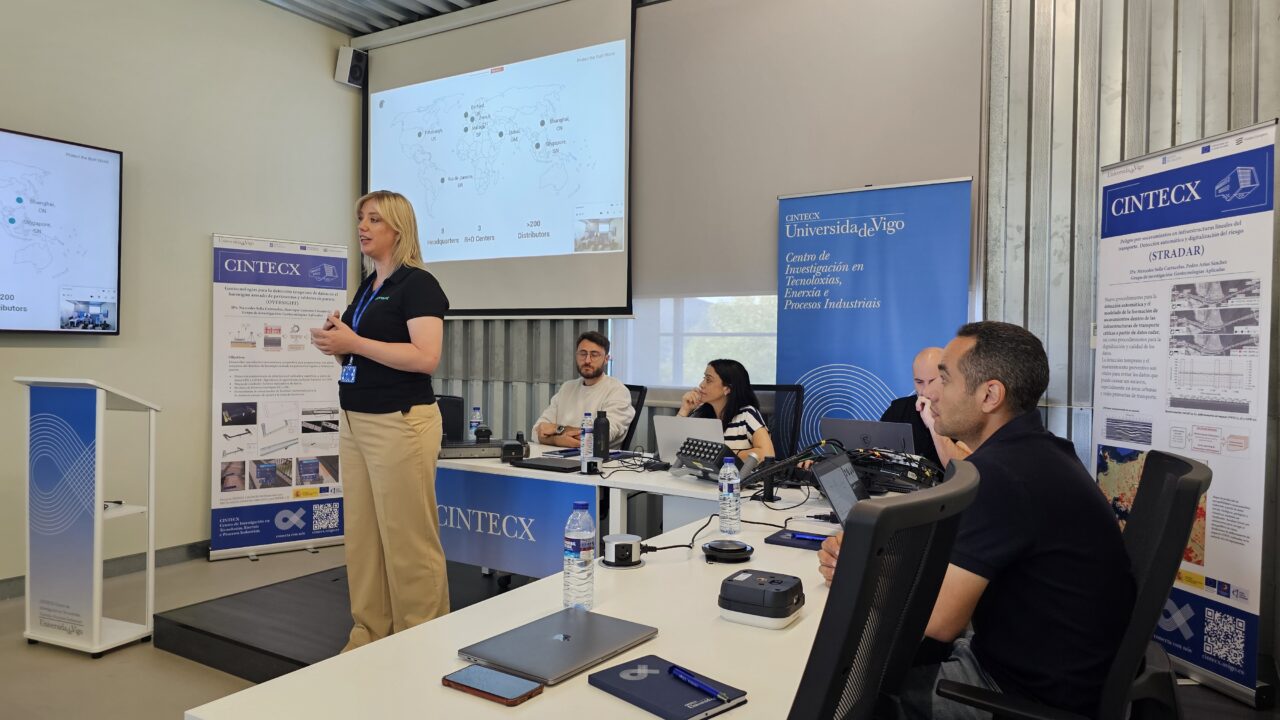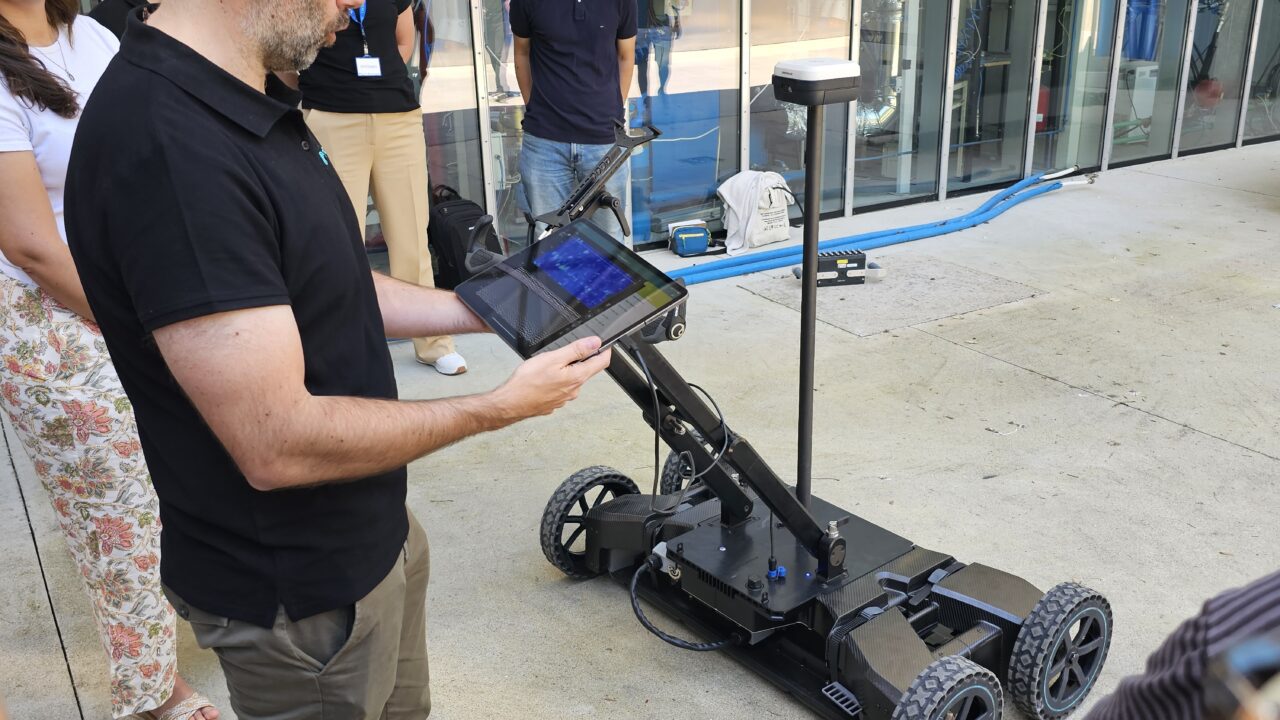The Research Center for Technologies, Energy and Industrial Processes (CINTECX) at the University of Vigo was the venue for the international seminar “Master Multimodal Non-Destructive Testing: Leverage AI, GPR, and Ultrasound”, a day focused on the use of emerging technologies for the non-destructive evaluation of infrastructure and cultural heritage.
The event, organized by Dr. María Mercedes Solla, researcher with the Applied Geotechnologies group at CINTECX (GeoTech), in collaboration with the company Screening Eagle – Proceq, brought together international experts and included the participation of researchers from CINTECX and students from the Higher School of Conservation and Restoration of Cultural Heritage of Galicia, based in Pontevedra.
Throughout the day, attendees had the opportunity to learn first-hand how artificial intelligence, ground-penetrating radar (GPR), and ultrasound technologies are transforming structural diagnostics and heritage conservation. The program featured high-level presentations by Dr. Jorge Otero, Dr. María Mercedes Solla, Ahmed Elseicy, and Dr. Alex Novo, covering topics ranging from fire damage assessment of the Moai statues on Easter Island to the application of deep learning models and multichannel GPR in transport infrastructure.
Dr. Jorge Otero, a researcher at the University of Barcelona, focused his presentation on assessing fire damage to the Moai statues on Easter Island using non-destructive testing technologies. Next, Dr. María Mercedes Solla presented the capabilities of ground-penetrating radar (GPR) to improve risk identification in transport infrastructure, highlighting its potential to detect hidden issues before they become structural failures. The third presentation was delivered by Ahmed Elseicy, a researcher with the GeoTech group, who demonstrated how deep learning models can accelerate GPR data interpretation, thereby supporting decision-making in infrastructure management. Finally, Dr. Alex Novo, Head of Product Management for GPR Applications at Screening Eagle – Proceq, discussed the use of multichannel GPR in structural monitoring and infrastructure maintenance, showcasing practical examples and results from recent projects.
Practical demonstrations with equipment
In addition to the theoretical sessions, the seminar included hands-on demonstrations with GPR Array equipment and Pulse-Echo ultrasound systems, led by Rosaly Wiegmans from Screening Eagle – Proceq and Dr. Alex Novo, allowing participants to directly experience these technologies applied to structural diagnostics.
The seminar provided an opportunity for attendees to acquire advanced techniques to enhance their skills in non-destructive testing and structural monitoring. Throughout the day, the potential of artificial intelligence, ground-penetrating radar (GPR), and ultrasound was explored as transformative tools for infrastructure evaluation and cultural heritage preservation. The combination of international expertise, theoretical content, and practical application made the event a high-level training experience, open free of charge to the entire interested community.
With initiatives like this, CINTECX strengthens its role as a benchmark in the use of emerging technologies applied to structural diagnostics and heritage preservation. The seminar was funded by Screening Eagle – Proceq and co-financed by the Support Program for the Structure, Improvement, and Support of Research Centers in the Galician University System (CIGUS), with European funding under the Galicia ERDF Operational Program 2021–2027. The event also featured contributions from projects led by the GEOTECH group: SUMARe, STRADAR, and OVERSIGHT.






